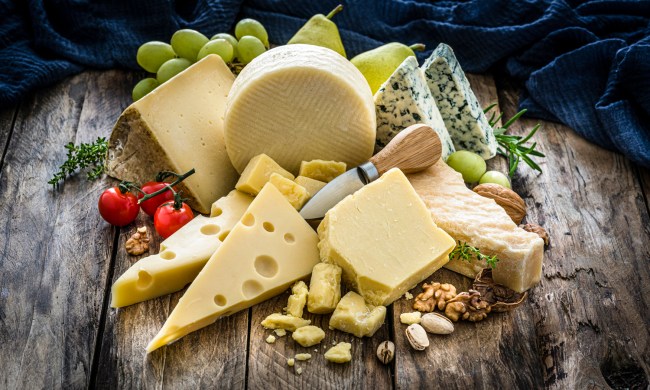It’s easy to understand why home cooks might feel intimidated by steak tartare. After all, the dish relies entirely on raw meat, which we’re often conditioned to regard with a wary eye. However, the truth (which this writer personally discovered this year) is that steak tartare requires no special culinary training to create. As long as you have a butcher that you trust and a bit of patience, you’ll be well-situated to make your own restaurant-quality version of this classic bistro dish.
To set you off on the right track, we asked pro chefs to share their top tips for making an excellent tartare, and we gathered the following pieces of useful advice, along with 2 tartare recipes well-worth a try.
Top-quality beef should be your No. 1 priority when making steak tartare.
This tip seems comically obvious, but it’s honestly worth repeating: the quality of your beef will never prove more important than when you’re planning to serve it raw. “To make a great steak tartare at home, choose a quality piece of steak that you will hand-cut into a small dice. It is always smart to mention to your butcher the meat will be eaten raw,” advises executive chef Laetitia Rouabah of Benoit NY in New York City.
“Use a more flavorful cut, like a Denver, a blade steak, or even a sirloin.”
It’s always advisable to ask your butcher for cut recommendations when making steak tartare, but if you’d like to head out on your shopping trip armed with valuable advice, consider these pointers from co-founder James Peisker of Porter Road in Nashville, Tennessee: “Use a more flavorful cut, like a Denver, a blade steak, or even a sirloin. Often, people will use more tender cuts. Generally, more tender cuts, like a tenderloin, don’t develop as much flavor. We are using our knife or blade to tenderize the meat when making tartare. Using an [already] tender cut is just a waste of money.”
Make tartare to order. Don’t let it sit around for too long before eating.
Steak tartare is a prime example of the value of a la minute cooking. Time isn’t on the side of a raw-meat dish dressed with flavor agents like salt and acid; “[with steak tartare,] only make enough for what you are serving. At Crook’s Corner, I make tartare to order. At home, only make what you need. You don’t want the raw egg yolk and raw beef [lingering] together for too long,” advises executive chef Justin Burdett of Crooks Corner in Chapel Hill, North Carolina.

Cut the meat by hand if possible and pop it in the freezer for a quick chill before chopping.
Plenty of chefs prefer to grind their tartare beef using a food processor attachment or a full-fledged grinding apparatus. However, for a more substantial bite, you’re better served by mincing your meat by hand. “I make the steak tartare at ALX hand-cut to order. No need for fancy tools like a meat grinder! Simply use a sharp knife to cut the meat into small and discernible cubes,” recommends executive chef Jessie Lugo of ALX in San Francisco, California.
If preparing raw meat makes you uneasy, be sure to keep your equipment and your workspace very clean.
If you want to dispel any possibility of contamination, focusing on the cleanliness of your equipment and your kitchen workspace is critical.
Working with raw beef can feel a bit uncomfortable, particularly if you’re a home chef with germaphobic tendencies. If you want to dispel any possibility of contamination, focusing on the cleanliness of your equipment and your kitchen workspace is critical. “When handling meat that you will eat raw, be extra clean. Bacteria lives on the surface of meat and it is killed when searing or roasting the cut of meat. Grinding [or chopping] a tartare mixes that bacteria throughout the raw meat. Keep the meat cold and you and the equipment clean. Only use fresh meat from a reputable source,” suggests craft butcher Rusty Bowers of Pine Street Market in Atlanta, Georgia.
Serve tartare on a chilled plate to retain freshness.
Temperature control is a major factor in a successful steak tartare preparation; in fact, it’s best to chill the meat before you even attempt to cut it. “Chill the meat in the freezer for about 40 minutes just to get it firm but not frozen,” says culinary director Edward Lee of Succotash in Washington, D.C.
To keep the beef in prime condition during service, “[you’ll want to] serve on a chilled plate or in a dish placed over crushed ice,” says senior vice president of food & beverage Brian Hinshaw of Cameron Mitchell Restaurants in Ohio.
When pairing wine with your tartare, stick to the dish’s French and German roots.
While traditional maxims favor the pairing of red meat with red wine, the delicacy of steak tartare calls for a less-bold beverage. “Tartare has French and German roots, so I recommend pairing with an Alsatian Gewurztraminer or even a nice glass of Champagne,” says head chef Len Symensma of Le Roux in Denver, Colorado.
Ready to try your hand at steak tartare? We’ve got two recipes for you to try; one traditional and one creative.
Classic Steak Tartare Recipe

(Created by Jonathan Olson, Executive Chef, The Keep, Columbus, Ohio)
Ingredients:
- 4 oz beef, chopped into ¼-inch pieces (Olson prefers beef tenderloin)
- 1 tbsp Dijon mustard
- 1 tsp shallot, finely minced
- 1 tsp cornichons, minced
- 3 tbsp olive oil
- .5 tbsp kosher salt
- 1 tsp black pepper
- 1 tbsp chives, finely chopped
- 1 egg yolk (Olson prefers quail eggs)
- 1 pinch sea salt
- Baguette slices for serving
Method:
- In a mixing bowl, combine beef, mustard, shallot, cornichons, 1 tbsp olive oil, salt, and pepper.
- Mix with a spoon until the beef is fully coated in the dressing.
- Spoon the tartare onto a chilled plate.
- Top with egg yolk.
- Brush sliced baguette with 2 tbsp olive oil and grill on both sides. Serve immediately.
“Japanese” Steak Tartare Recipe
(Created by Alex Lafleur, Chef de Cuisine, The Vermillion Room, Banff, Alberta, Canada)
Ingredients:
- 21 oz hand-diced beef
- 4 oz fresh ramp stems, chopped
- 2 oz pickled ginger, chopped
- 1.5 oz cilantro stems, chopped
- 1.2 oz tamarind sauce
- 1.7 oz rice vinegar
- Wasabi paste, to taste
Method:
- Combine all ingredients except for the rice vinegar, tamarind sauce, and wasabi paste in a mixing bowl.
- Add half the tamarind sauce and vinegar, then supplement according to your tastes.
- Add wasabi paste to taste.
- Serve with puffed rice chips, sliced avocado, and pickled egg yolk.



